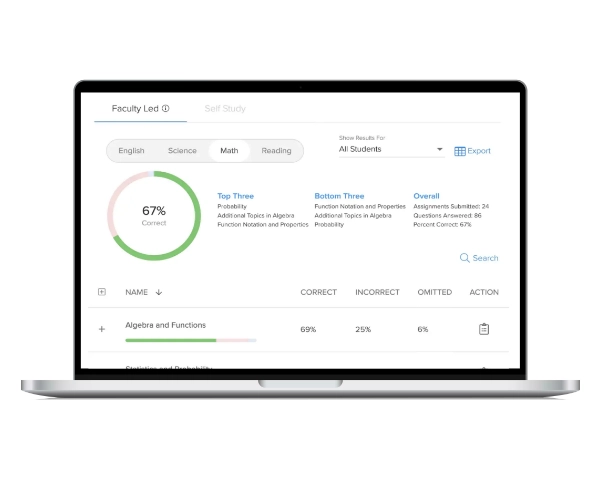Due to the rigors of Advanced Placement® education, there are a number of significant challenges AP teachers take on during the course of a school year. Finding supplemental resources, communicating with exacting parents, the never-ending grading, ensuring equity for every student — these are just a few of the many responsibilities every AP teacher carries each year.
There are tremendous rewards in AP instruction, but the many demands can get tiring. And if teachers aren’t careful, the weight of those demands can lead to frustration and fatigue. This is why it’s important to only take on responsibilities and mindsets that are absolutely necessary for student success.
Mike Crivello, a UWorld College Readiness content expert with 28 years experience teaching both AP English Literature and AP English Language, says there is a solution to AP exhaustion: In addition to the things AP teachers must take on, there are some things to let go of in order to make their workload manageable and, most importantly, increase student satisfaction and success.
Here are five things Mike says even the best AP teacher should consider letting go . . .
- Jettison the belief that you are on your own. There are now so many valuable materials available online that a quick search for ideas about how to teach a certain novel or a period in history or a physics concept will really help.
- Throw overboard the idea that you are teaching a college class. What you are really doing is preparing high school students — kids with all the pressures and demands and distractions that high school students encounter — to master a challenging test in spring that will earn them college credit.
- Put cement shoes on the feeling that you must grade every piece of work that your students produce. Consider having your students keep a portfolio of their work and have them select their best work for your consideration, or have students review the work of their peers from time to time.
- Deep-six reliance on lecture. The more your students collaborate on problems or share in discussions, the more they will learn. But always exhibit your own enthusiastic love for the subject area you teach.
- Give the heave-ho to composing your own tests. Focus your instruction on the demands of the AP exam, and use the released tests available from AP Central and, even better, the online learning tools UWorld provides.
Sure, the nautical theme might be a little overboard (See what I did there?), but the advice is still solid. There are certain ingrained mindsets, unrealistic expectations, and ineffective practices that AP teachers place on themselves that aren’t absolutely essential to improve learning and critical thinking — all they do is increase workload and heighten stress levels . . . for students and teachers alike.
Supportive administrators and savvy AP teachers are always looking for ways to streamline their approach without sacrificing achievement. Jettison the belief you are on your own, throw overboard the idea this is a college class, put cement shoes on the feeling you have to grade every paper, deep-six the reliance on lecture, give the heave-ho to composing your own tests — if you’ll take these first steps, you’ll find the wind at your back and it will be smooth sailing for the rest of the year. (Okay, I’ll see myself out.)
——————————————————————————————————————————-
At UWorld, we are committed to helping educators do what they do best: make a difference in the lives of their students by helping each student reach their full potential.
For districts, schools, and teachers looking to enhance AP classes and boost student scores, UWorld offers an innovative AP resource that helps students master the concepts needed for AP success.
With perfectly modeled College Board®level questions, concise answer explanations, and easy-to-access performance monitoring, our supplemental online learning tool will help you take your AP education to the next level. Discover how we can help your program today.




